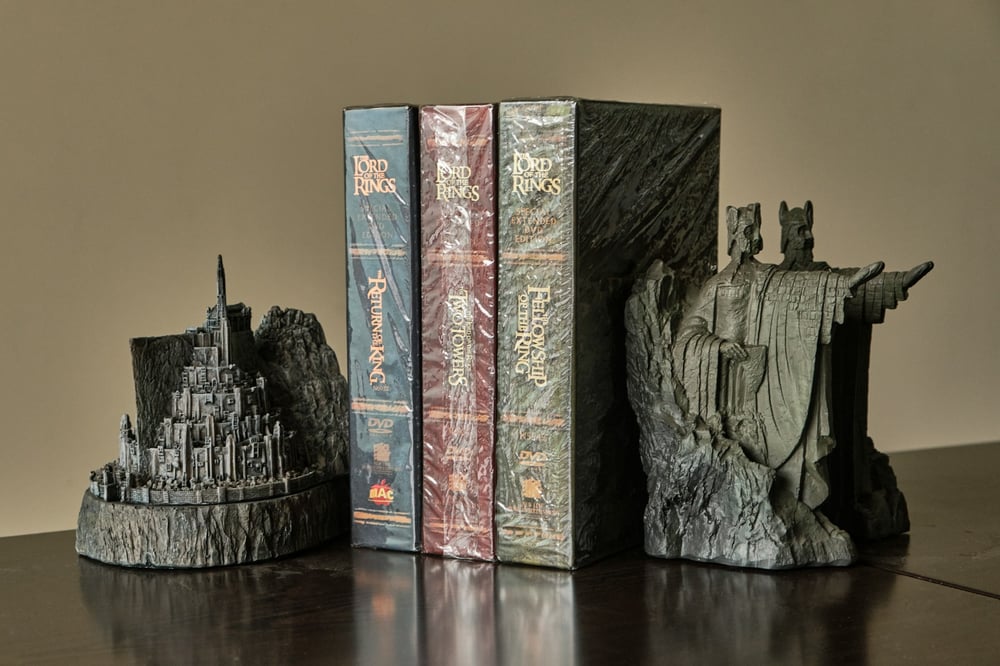Wield Words as Weapons: The Power of Alliteration

Welcome to a world of wondrous wordplay! Of all the tools and techniques that we writers have available to us, certain stylistic devices add both an artistic flair and anchor our attention firmly in the words we’ve written.
Among those is the awesome (and, if awfully misused, potentially annoying) alliteration.
On its surface, alliteration might seem like a simple technique, but it has the power to transform the mundane into the memorable.
But how does the repetition of sounds shape our reading experience, and why do writers across genres and generations gravitate towards it? I’m so glad you asked in those exact words!
In this article, we’re going to find out. That includes:
- Defining this literary device
- Analyzing great examples from different genres
- Penning the perfect alliteration
- Discussing some techniques to polish your prose
Fair warning, there are a lot of alliterations in this article. They say practice makes perfect, so you’ll be a professional by the time you’re done here. Let’s get alliterating.

Alliteration Awareness: Understanding and Utilizing This Literary Device
Before we can figure out how to use alliterations, we need to know what they are. This means establishing both the definition and what these strings of words can actually do.
Alliteration, at its core, is the artful alignment of adjacent or closely connected words that start with the same sound. It's a stylistic device that, when wielded wisely, creates wonder.
Can you overdo it? Sure, but not in an article about alliteration itself.
This device isn’t just about whimsical wordplay. It spans a spectrum of literature from the epic poetry of ancient times, like Homer’s Iliad, to the modern masterpieces of today. In children’s literature, alliteration makes text more memorable and engaging, like in Dr. Seuss’s work, including The Lorax:
"At the far end of town where the Grickle-grass grows and the wind smells slow-and-sour when it blows and no birds ever sing excepting old crows... is the street of the Lifted Lorax."
In journalism and advertising, it helps headlines and slogans stick, like Dunkin’ Donuts or PayPal.

Rhythmic, Resonant, and Rememberable
To be clear, the benefits of alliteration extend well beyond just repeating sounds and hoping it catches your reader’s attention. It adds a rhythmic pulse to prose, a cadence that captures their notice.
In poetry, this rhythm can be a powerful tool. Meter and beat are essential to that style of writing, and alliteration can create a musical quality to the words, making it more enjoyable and engaging to read.
The benefits extend beyond poetry, though. To an extent, alliteration can help almost any writing.
Tone and mood - A series of words starting with ‘s’ can create a soft, soothing sound. Oppositely, hard consonants like ‘d’ and ‘t’ can tease a tantalizing timbre to build tension. Sprinkling these methods throughout your prose can create subtle changes that have a big impact on your reader.
Memorability - Alliterative phrases stick with us, too, which is why they’re effective in speeches—including those given by your characters. Consider Martin Luther King Jr.’s famous speech, I Have a Dream:
“I have a dream that my four little children will one day live in a nation where they will not be judged by the color of their skin but by the content of their character.”
“The sweltering summer” and “mighty mountains of New York” in that same speech both emphasize the obstacles that need to be overcome by Black Americans.
Whatever way you wield them, alliterations can draw attention where you want it and manipulate the way your reader digests them.
Genre-Specific Splendor: Application of Alliteration
Before binding bountiful knowledge to your brain about writing alliterations, let’s take a moment to look at some well-known examples of this tool in action. We’ve seen some already, but literary tools like this one are best broken down into bite-sized pieces.
Poetic Power
In poetry, alliteration can be a subtle sculptor of sound. Maybe it’s because I recently devoured Netflix’s The Fall of the House of Usher, but my mind immediately goes to Poe in this case. Here’s an excerpt from The Raven:
“And the silken, sad, uncertain rustling of each purple curtain.”
Those ‘s’ sounds—including the one in uncertain—seem so simple but underscore the poem’s eerie atmosphere just from the noises they make.
But alliterations can also be used to force the reader to consume your words in a certain fashion. Here are a couple lines from Samuel Taylor Coleridge’s The Rime of the Ancient Mariner (a favorite of mine from school):
“The fair breeze blew, the white foam flew, / The furrow followed free.”
The ‘f’ and ‘b’ sounds actually create a sort of movement, almost mirroring the motion of the sea, while coaxing us, the readers, through the lines.
.jpg)
Narrative Nuance
Moving beyond poetry, alliteration in prose can be equally effective at controlling your readers. Injecting important moments or descriptions with this literary device can highlight their importance.
Take a look at some lines from the classic The Great Gatsby by F. Scott Fitzgerald:
“...and for a moment I thought I loved her. But I am slow-thinking and full of interior rules that act as brakes on my desires.”
Alliterations as obvious as poetry or this article? No. But the subtle repetition of ‘s’ in “slow-thinking,” “interior rules,” “brakes,” and “desires” all work together to reflect Nick Carraway’s introspection and caution.
For a more contemporary example, let’s look at the Harry Potter series. Not only do characters have names like Severus Snape and Luna Lovegood to make them unique and memorable, but alliteration is sprinkled throughout the books.
Here’s a line from Harry Potter and the Sorcerer’s Stone:
“Dudley Dursley, an enormous boy with a piggy face and a pair of round glasses, was snoring serenely on a large, squashy armchair.”
Another alliterative name, plus some sequences of distinct descriptors. Adding a playful, rhythmic quality to the prose makes these descriptions more vivid and memorable.
Now let’s figure out how to bring these phrases to life in your own writing.
Phrasing and Practicing: Mastering Memorable Alliteration
There’s more to making a memorable alliteration than simply stringing similar sounds. If that were all, you’d be a pro just from reading all the examples so far.
That completely negates the purpose behind this literary device, though. And if we aren’t writing with purpose, we’re doing a disservice to our reader.
Crafting and Creating: Step-by-Step Structuring
Coming up with alliterations is a process that, when done well, adds depth and dynamism to your writing. Here’s a step-by-step approach to crafting your own alliterative phrases.
And, for the sake of making sure you understand this process, I’m toning down my own alliterations (for now).
1. Identify Your Purpose
First up, consider what you want to achieve with your alliteration. Are you influencing the tone or mood? Creating a rhythm? Do you want to make a phrase more memorable?
We don’t alliterate for the sake of it. We do it for a reason. What is yours in this particular passage?

2. Choose Your Sound
Next, select a sound that will anchor your alliteration.
Generally, this sound is a consonant, but vowels can work, too. Bear in mind that vowel sounds are softer, and that softness comes with a particular effect.
‘S’ and ‘w’ can create soft sounds, too, which can de-escalate tension or lull your reader into comfort.
‘K’ and ‘v’ are usually sharper, which makes them useful for building tension and excitement.
3. Develop Your Phrase
Now start piecing your phrase together. If you’re struggling to find the right word, a thesaurus will be your best friend.
Pro tip: Dabble has a built-in thesaurus to make writing alliterations and descriptive moments easier and—quite frankly—better.
4. Read Aloud
Alliterations stem from poetry, so they’re rooted in the spoken word. The best way to understand if your alliteration works is to gauge it with your ears.
Read your phrase aloud and see how it flows. Adjust as necessary.

5. Contextualize
Finally, you need to find the perfect place for your piece. This might take a few tries, so play around with its placement in paragraphs and sentences.
Mostly, you want to make sure it enhances the rest of your writing. If it’s too distracting, it’s going to detract from your prose.
Ten Techniques and Tips for Awesome Alliterations
It’s not enough to know how to craft an alliteration; you need to make magic with them. It should feel natural, not overbearing.
So here are 10 things to keep in mind when using this literary device:
- Intentional inclusion - Use alliteration to emphasize key points or add flair to your narrative. It should serve the story or message, not distract from it.
- Start small - Start with short phrases or simple sentences, especially if you don’t normally use alliterations. Once you’ve got a better hang of this tool, you can try expanding it across a paragraph.
- Vary the sounds - It’s easy to lean on certain sounds—especially ‘s’—so try mixing it up and see what the effect is!
- Keep context in mind - If you’re writing a romantic scene, softer sounds are superior. High stakes call for harsher consonants.
- Find the right words - If you’re struggling to find the perfect word, use a thesaurus or do some brainstorming. You might even switch up the sound you’re using altogether.
- Avoid forced phrases - If it doesn’t sound natural, don’t force it. Alliteration should enhance your clarity, not hinder it.
- Balance sound and sense - In the same vein, ensure your alliterative phrases make sense in the context of your writing. The sound should not overpower your meaning or your other words.
- Keep it subtle - You can get away with more alliterations in poetry, and to be clear, I know I’ve (intentionally) used too many in this article. In prose, the most effective alliteration is subtle and sparse.
- Remember writing variety - And I’m not just talking about your sounds. Alliteration is just one tool in your arsenal. Don’t become reliant on it.
- Read aloud - Hearing your work can help you identify if the alliteration feels natural or forced. If it disrupts the flow or sounds too conspicuous, it might be worth revising.
Crafting Captivating Compositions
Alliteration is a powerful device, but it’s not the only one you should be using. Once you’ve got the hang of crafting these captivating compositions, add it to your toolkit.
But don’t neglect everything else.
If you’re looking for lots of articles spanning every aspect of writing, look no further than DabbleU. We have hundreds of guides, exercises, and how-tos on the craft of writing, from literary devices like alliterations to genre-specific deep dives and templates.
And guess what? It’s all for free.
Then, if you want an extra dose of free resources, click here to grab our e-book, Let’s Write a Book, that will guide you from idea to finished first draft. More than 100 pages, costs less than $0.01.
Now no more nagging from me. Go write something great.









